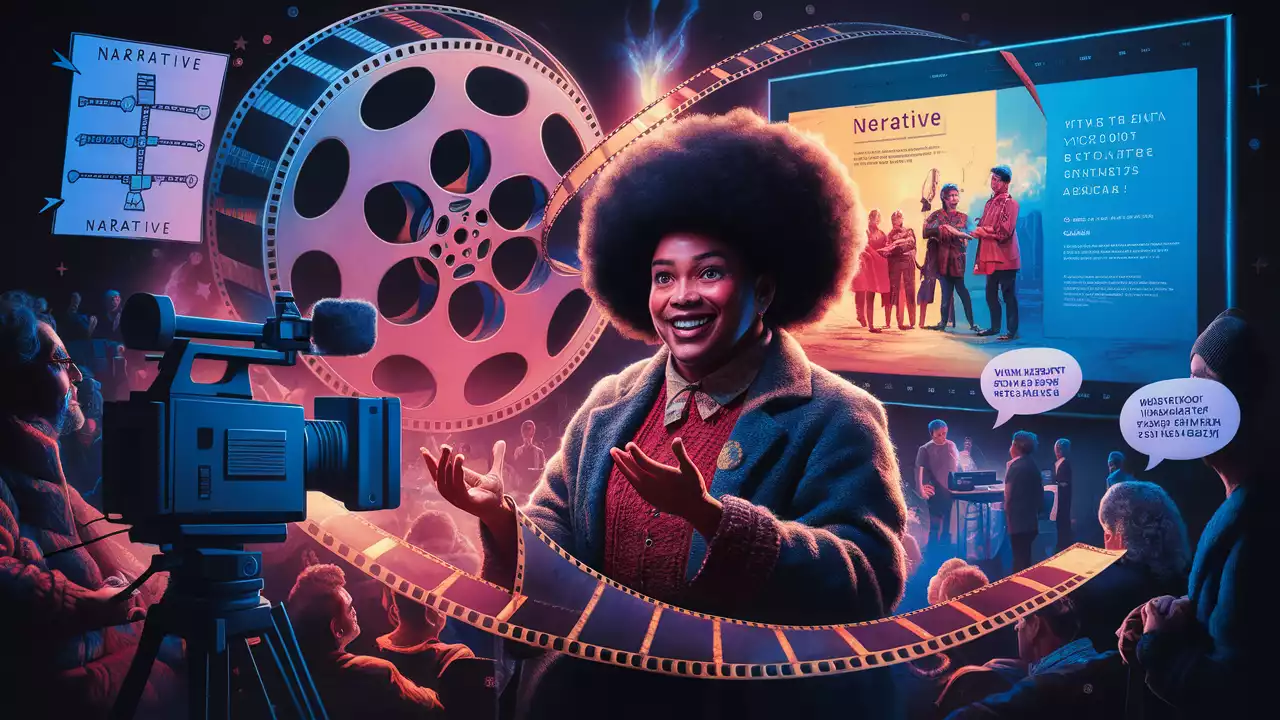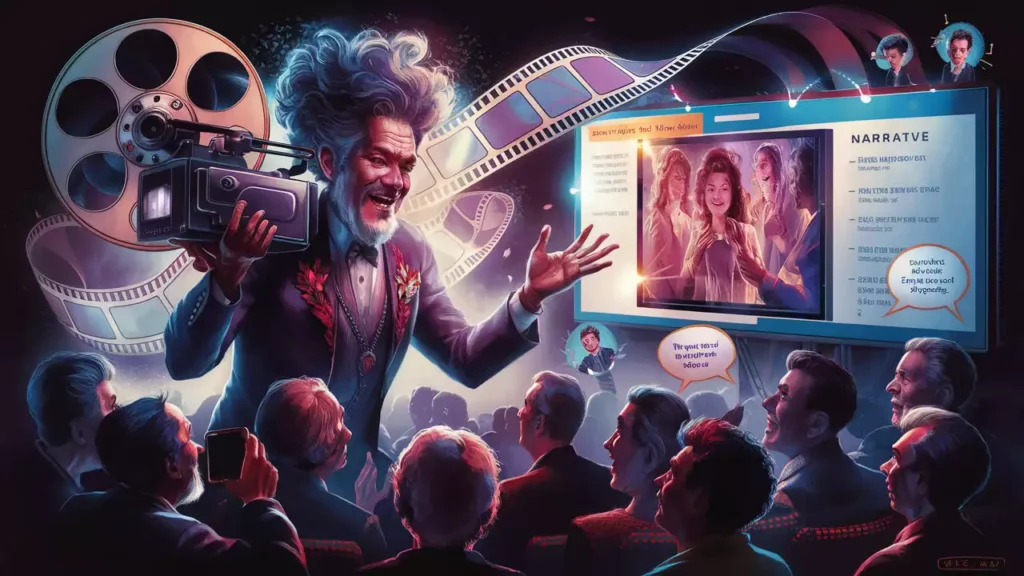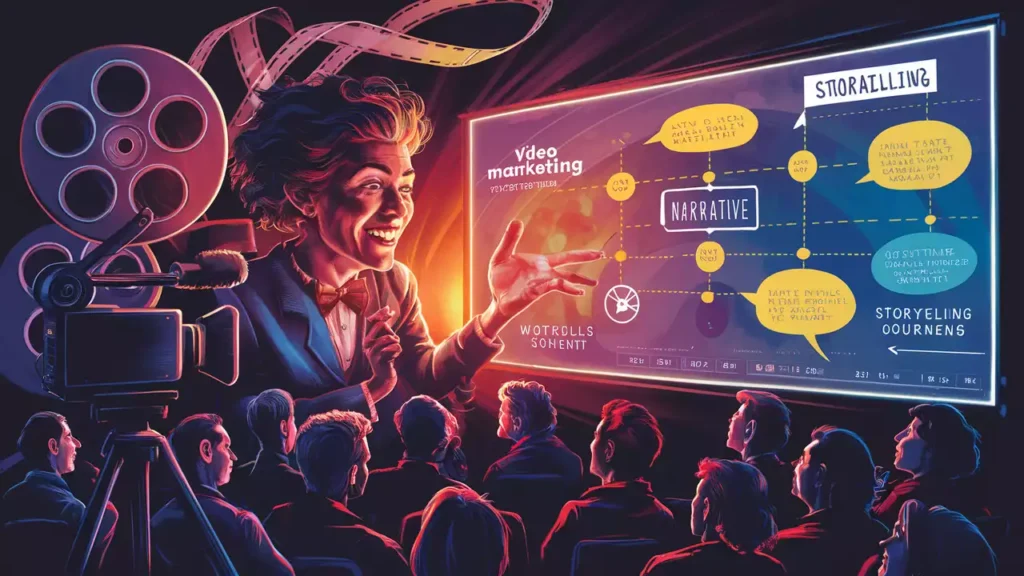Single Blog
Power of Storytelling in Video Marketing
Jun 9, 2024
framehustle.com

Efficiently strategize just in time process
In today’s digital age, where consumers are bombarded with content from all directions, capturing attention and building a meaningful connection with your audience is more challenging than ever. Traditional advertising methods are losing their impact, and brands are constantly seeking innovative ways to stand out. This is where storytelling in video marketing comes into play. By weaving compelling narratives into your video content, you can create an emotional bond with your audience, making your message more memorable and impactful. In this blog, we’ll explore the power of storytelling in video marketing and how it can elevate your brand’s presence in the crowded digital landscape.
The Science Behind Storytelling
Emotional Engagement
Human beings are wired for stories. From ancient myths to modern cinema, stories have always played a crucial role in our lives. When we watch a well-crafted story, our brains release oxytocin, a hormone associated with empathy and bonding. This emotional engagement makes us more receptive to the message being conveyed. In the context of video marketing, a compelling story can create a deep emotional connection with your audience, making them more likely to remember your brand and take action.
Cognitive Processing
Stories also aid in cognitive processing. When information is presented in a narrative format, it’s easier for our brains to comprehend and retain. This is because stories provide context and structure, making complex information more digestible. In video marketing, using storytelling techniques can help convey your message more effectively, ensuring that your audience understands and remembers your key points.
Why Storytelling Matters in Video Marketing
Building Trust and Credibility
In a world where consumers are increasingly skeptical of advertising, building trust and credibility is paramount. Stories humanize your brand, making it more relatable and trustworthy. By sharing authentic stories about your brand’s journey, values, and mission, you can create a sense of transparency and authenticity that resonates with your audience. This trust is essential for fostering long-term relationships with your customers.
Differentiating Your Brand
In a saturated market, differentiation is key to standing out. Storytelling allows you to showcase what makes your brand unique. Whether it’s your brand’s history, the people behind your products, or the impact you’re making in the world, storytelling helps highlight your distinctive qualities. By crafting a unique narrative, you can differentiate your brand from competitors and create a lasting impression on your audience.
Driving Engagement and Conversions
Engagement is the holy grail of video marketing, and storytelling is a powerful tool for driving it. A captivating story captures attention and keeps viewers hooked from start to finish. This increased engagement translates to higher view counts, longer watch times, and more shares on social media. Moreover, an emotionally charged story can drive viewers to take action, whether it’s subscribing to your channel, visiting your website, or making a purchase.

Elements of Effective Storytelling in Video Marketing
A Clear Message
At the heart of every great story is a clear and compelling message. Before you start crafting your narrative, identify the key message you want to convey. What do you want your audience to take away from your video? Whether it’s the benefits of your product, your brand’s values, or a call to action, make sure your message is clear and resonates with your target audience.
Relatable Characters
Characters are the backbone of any story. They serve as the audience’s point of connection and empathy. In video marketing, your characters could be your customers, employees, or even fictional personas that embody your brand’s values. Ensure your characters are relatable and authentic, allowing your audience to see themselves in the story.
A Compelling Plot
A compelling plot keeps viewers engaged and invested in your story. The classic three-act structure – setup, conflict, and resolution – is a tried-and-true method for crafting engaging narratives. Start with a setup that introduces the characters and setting, present a conflict that creates tension and intrigue, and conclude with a resolution that delivers a satisfying payoff. This structure ensures your story has a clear arc and keeps viewers hooked from beginning to end.
Emotional Appeal
Emotion is the driving force behind effective storytelling. Tap into your audience’s emotions by addressing their pain points, desires, and aspirations. Whether it’s joy, sadness, fear, or inspiration, evoke emotions that resonate with your audience. An emotionally charged story creates a deeper connection and leaves a lasting impact.
Visual and Auditory Elements
Video is a multisensory medium, and leveraging visual and auditory elements can enhance your storytelling. Use visuals that complement and reinforce your narrative, such as captivating imagery, dynamic camera angles, and vibrant colors. Music and sound effects also play a crucial role in setting the tone and mood of your story. Together, these elements create an immersive experience that draws viewers in.
Examples of Successful Storytelling in Video Marketing
Dove’s “Real Beauty Sketches”
Dove’s “Real Beauty Sketches” campaign is a prime example of storytelling done right. The campaign features an experiment where women describe themselves to a forensic sketch artist, who then draws two sketches – one based on their self-description and another based on a stranger’s description. The stark contrast between the two sketches highlights the women’s lack of self-esteem and promotes Dove’s message of self-acceptance and beauty. The emotional and relatable narrative struck a chord with viewers, resulting in millions of views and widespread acclaim.
Apple’s “The Underdogs”
Apple’s “The Underdogs” is a short film that follows a team of employees working on a top-secret project. The film’s engaging plot, relatable characters, and humor make it an entertaining watch while subtly showcasing Apple’s products in action. The story emphasizes themes of teamwork, creativity, and innovation, aligning with Apple’s brand values. The film’s success lies in its ability to tell a compelling story while seamlessly integrating product placement.
Airbnb’s “Wall and Chain”
Airbnb’s “Wall and Chain” tells the true story of two former border guards from opposite sides of the Berlin Wall who reunite years later through Airbnb. The emotional narrative highlights themes of reconciliation and human connection, resonating with Airbnb’s mission of creating a world where anyone can belong anywhere. The story’s authenticity and emotional appeal made it a memorable and impactful campaign.

Tips for Incorporating Storytelling into Your Video Marketing
Know Your Audience
Understanding your audience is the first step in crafting a compelling story. What are their interests, values, and pain points? Tailor your narrative to resonate with your target audience’s preferences and needs. Conducting audience research and creating buyer personas can provide valuable insights that inform your storytelling strategy.
Start with a Strong Hook
The first few seconds of your video are crucial for capturing attention. Start with a strong hook that piques curiosity and entices viewers to keep watching. Whether it’s a thought-provoking question, a surprising fact, or a visually striking image, make sure your opening grabs attention and sets the stage for your story.
Keep It Authentic
Authenticity is key to building trust and credibility. Be genuine in your storytelling and avoid overly polished or scripted content. Share real stories, experiences, and testimonials that reflect your brand’s true essence. Authenticity resonates with viewers and creates a deeper connection.
Use Data and Metrics
Data and metrics can provide valuable insights into the effectiveness of your storytelling efforts. Monitor key performance indicators such as view counts, watch times, engagement rates, and conversion rates to gauge the impact of your video content. Use this data to refine your storytelling strategy and optimize future campaigns.
Leverage Different Platforms
Different platforms have different audiences and requirements. Tailor your storytelling approach to suit each platform’s unique characteristics. For example, short and snappy stories work well on Instagram, while longer, more in-depth narratives are better suited for YouTube. Leverage the strengths of each platform to maximize the reach and impact of your story.
Conclusion
In the ever-evolving landscape of digital marketing, storytelling remains a powerful and timeless tool. By incorporating storytelling into your video marketing strategy, you can create emotional connections, build trust, and drive engagement with your audience. Remember, the key to effective storytelling lies in understanding your audience, crafting a clear and compelling message, and delivering it with authenticity and creativity. As you harness the power of storytelling, you’ll not only elevate your brand’s presence but also create memorable and impactful experiences for your viewers.
